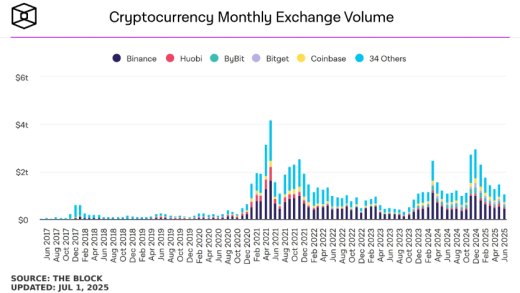I. Industry Risk Analysis
(1) Policy Risk
The prenatal weight management industry currently faces uncertainties associated with the initial stage of policy formulation. The national health and health departments are gradually exploring regulatory standards, but specific details such as relevant technical thresholds and service qualifications remain unclear. This may require offline health management institutions that have already made investments to make compliance adjustments. Meanwhile, the State Administration for Market Regulation has tightened its supervision of advertisements claiming “medical effects” for weight management products, posing a risk of sudden penalties for excessive marketing. The fragmentation of industry group standards and local pilot policies has also increased the adaptation costs for cross – regional operations.
(2) Economic Risk
The prenatal weight management industry is currently squeezed by both demand and cost pressures due to economic cycle fluctuations. During an economic downturn, consumers’ disposable income decreases, and non – essential health management services are given lower priority, limiting market growth. During the economic recovery period, medical resources are tilted towards basic medical treatments, and the industry is vulnerable to adjustments in public health policies. At the same time, the costs of upstream medical equipment and professional labor are rising due to inflation, compressing the profit margins of enterprises. In the asset – light model, competition among homogeneous services has intensified, increasing the risk of price wars. The stability of cash flow is affected by both economic cycles and changes in the industry’s competitive landscape.
(3) Social Risk
The prenatal weight management industry faces the risk of a generational gap in consumption concepts. Young expectant mothers (Generation Z) rely more on digital health management tools and word – of – mouth on social platforms but are vulnerable to information overload and pseudo – scientific content. The declining trust in the traditional medical system has led to a disconnection in the acceptance of professional services. Meanwhile, there are significant generational differences in health awareness. Mothers born in the 1970s and 1980s are overly concerned about maternal and infant safety, which may lead to anxiety – driven consumption, while those born in the 1995 – 2000 period prioritize self – gratification, weakening the rigid demand. The industry is caught in a double – track dilemma of dispelling traditional prejudices and countering the rationalization of emerging consumption. The lag in policy supervision and generational value conflicts may lead to ethical disputes.
(4) Legal Risk
The legal risks in the prenatal weight management industry mainly focus on compliant operations and liability definition. Entrepreneurs need to ensure that their service content does not involve unauthorized medical practices to avoid violating the “Regulations on the Administration of Medical Institutions.” Nutritional guidance for special groups (such as those with gestational diabetes) must comply with the “Food Safety Law” and relevant regulations of the National Health Commission. The collection and processing of users’ health data must follow the “Personal Information Protection Law” to prevent litigation risks caused by privacy leakage. Words such as “weight loss” and “curative effect” in advertising are likely to constitute false advertising prohibited by the “Advertising Law,” and individual differences in weight management results may lead to consumer disputes due to discrepancies between service promises and actual outcomes.
II. Entrepreneurship Guide
(1) Suggestions on Entrepreneurial Opportunities
Entrepreneurs in the prenatal weight management industry can focus on developing intelligent and personalized prenatal weight monitoring and intervention solutions. By integrating the resources of obstetricians, nutritionists, and sports experts, they can build a closed – loop service system of “AI algorithms + wearable devices + medical consultations,” with a focus on key points such as early – pregnancy weight assessment, dynamic adjustment in the second and third trimesters, and post – natal weight recovery. They can conduct targeted marketing through maternal and infant community platforms, offer customized diet/exercise packages based on clinical data, and establish a data – sharing mechanism with the obstetrics departments of top – tier hospitals to enhance service credibility. Subscription – based services can be used to target high – end and mid – end pregnant and post – natal groups in second – and third – tier cities.
(2) Suggestions on Entrepreneurial Resources
Entrepreneurs in the prenatal weight management industry should focus on integrating medical, technological, and channel resources. They should collaborate with professional resources such as obstetricians and nutritionists to develop scientific management plans and enhance service credibility. They can introduce suppliers of smart wearable devices or AI algorithms to develop real – time monitoring and personalized advice functions and strengthen product competitiveness. They should connect with precise traffic sources such as maternal and infant community platforms and maternity care centers to establish asset – light channels for user acquisition and service delivery. They should prioritize seeking investment from maternal and infant health industry funds or investors with a medical background and apply for government special subsidies related to maternal and child health care. By using the original equipment manufacturing (OEM) model to cooperate with established medical device manufacturers, they can reduce the R & D and production costs of hardware and focus core resources on service design and data value mining.
(3) Suggestions on Entrepreneurial Teams
Entrepreneurs in the prenatal weight management industry need to form complementary teams based on the core elements of the Timmons model (opportunity, team, and resources). They should prioritize including medical/nutrition experts to ensure product professionalism, recruit technical developers with experience in the health field to meet data tracking and analysis needs, and introduce user experience designers to enhance service interactivity. The founders need to strengthen their leadership, bind core members through equity incentives, establish a flexible collaboration mechanism to adapt to tightened policy supervision and changing consumer demands, and focus on cooperation with medical institutions and community resources to make up for the lack of offline service capabilities. Through the professional endorsement and resource integration of the team, they can quickly build a user trust barrier.
(4) Suggestions on Entrepreneurial Risks
Entrepreneurs in the prenatal weight management industry need to prioritize ensuring service compliance, obtaining product effectiveness certification from authoritative medical institutions to avoid risks related to medical qualifications. They should adopt a lightweight service model (such as online nutritional guidance combined with smart wearable devices) to reduce initial operating costs. They should establish a firewall for user data security and use privacy – computing technology to process sensitive health information. They should deeply cooperate with obstetric hospitals and community resources to reduce customer acquisition costs through B – to – B cooperation. They can introduce a dynamic insurance mechanism, customize liability insurance for individual differences to avoid service disputes. They should regularly update service content to keep pace with the updates of the prenatal care guidelines of the National Health Commission and avoid risks associated with policy lags.





